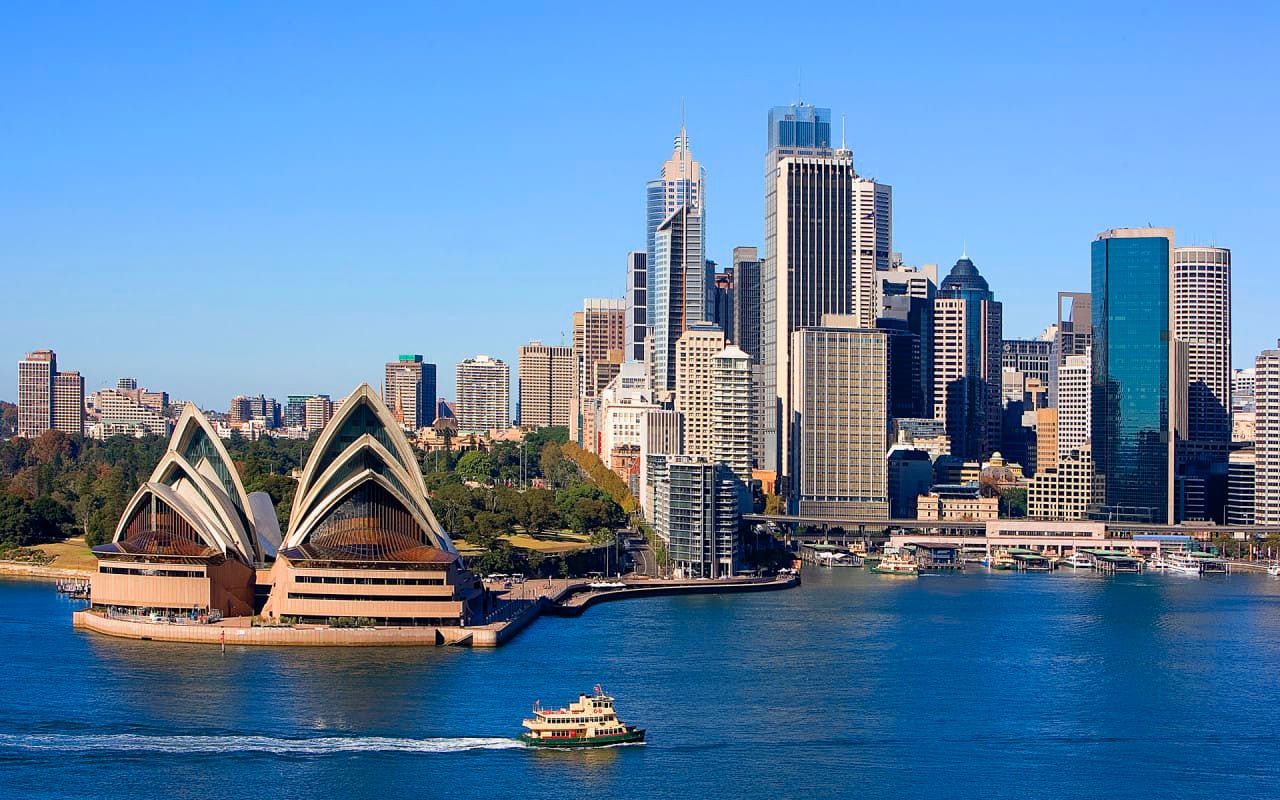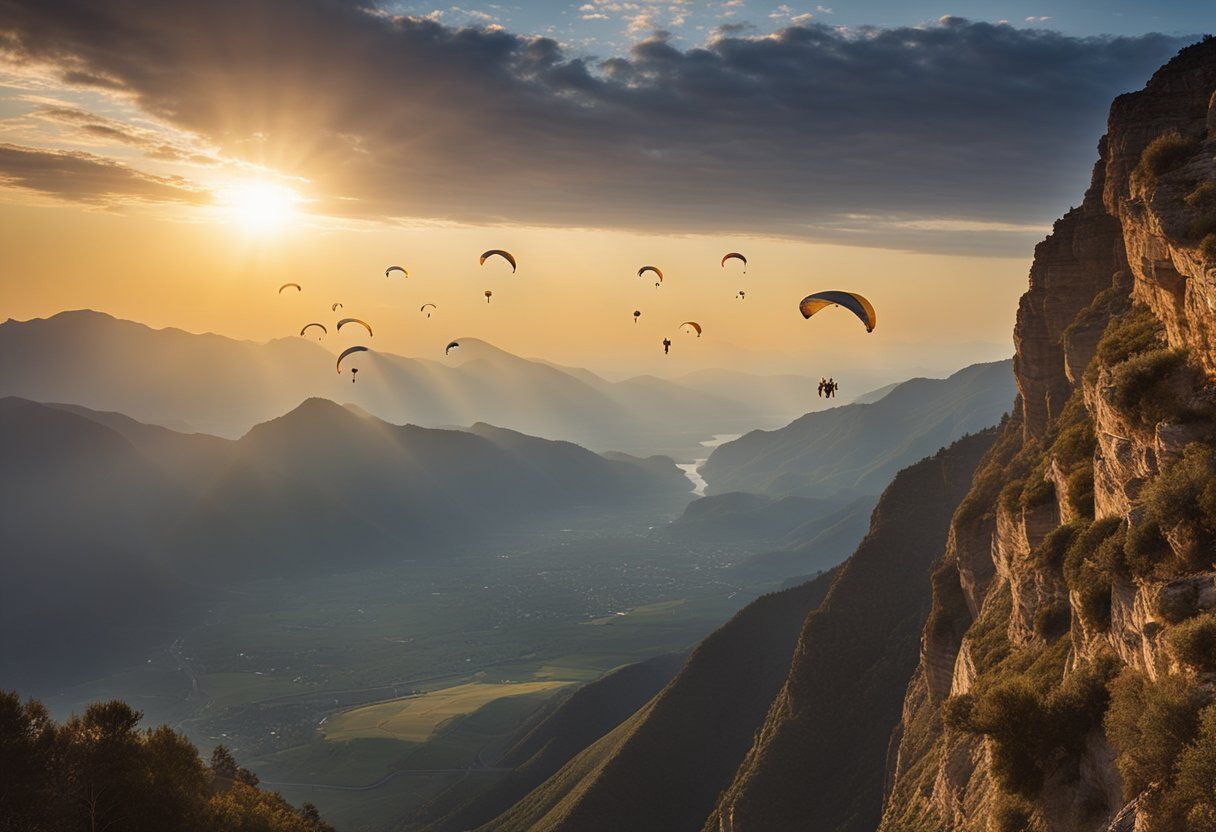To share
Exploring the Australian backcountry offers a unique camping experience far from crowded sites. The vast landscapes, from rugged coastlines to expansive deserts, provide diverse opportunities for adventure. Backcountry camping in Australia allows campers to fully immerse themselves in nature and discover remote areas that are often untouched by tourism.
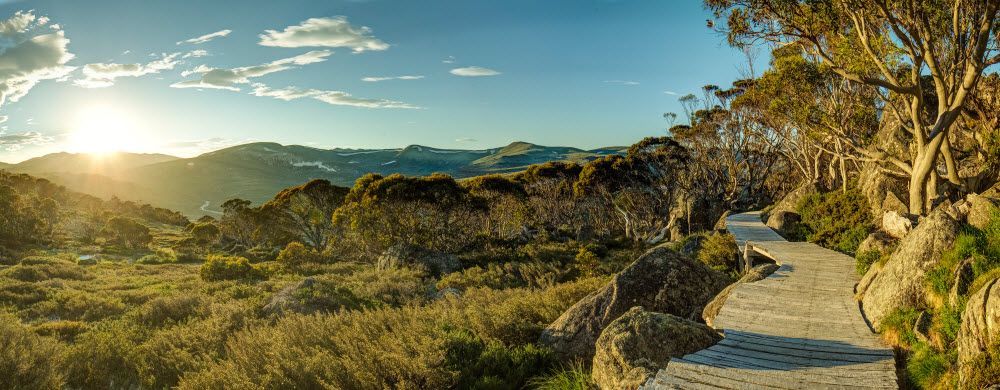
This type of camping is particularly appealing to those who seek solitude and nature's raw beauty. It's important to understand the regulations, such as those in Kosciuszko National Park, where camping near certain lakes is restricted. Knowing where to camp freely and what areas are off-limits ensures a safe and respectful adventure.
Preparation is key to a successful backcountry camping trip in Australia. Campers should consider their physical and mental readiness, the necessary equipment, and navigation skills to tackle remote areas. Experienced hikers often share insights and tips on forums like Australian Hiker, offering valuable advice for newcomers and seasoned explorers alike.
Key Takeaways
- Backcountry camping in Australia offers solitude and interaction with nature.
- Understanding specific area regulations ensures a safe camping experience.
- Proper preparation and equipment are essential for remote camping trips.
Understanding Backcountry Camping in Australia
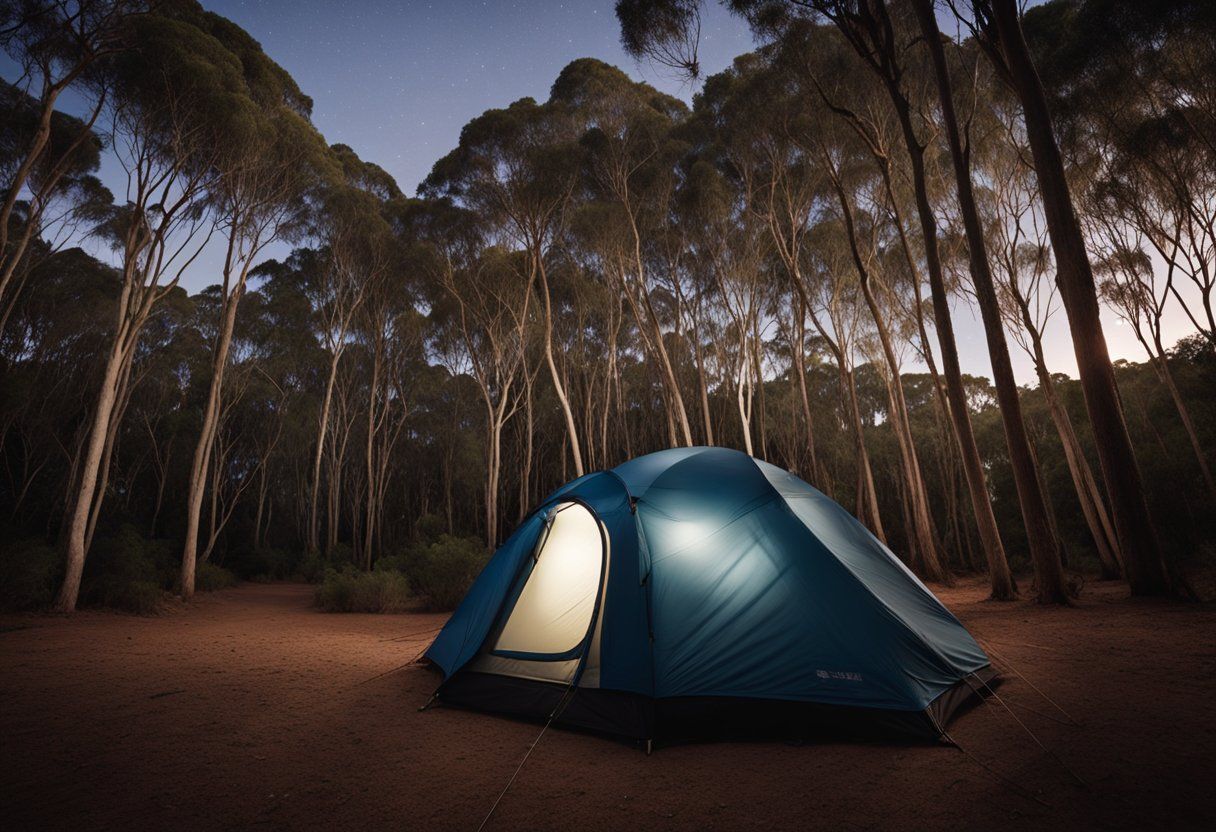
Backcountry camping in Australia is an immersive way to experience the country's stunning natural landscapes. The practice involves venturing into remote areas far from traditional campsites, offering both challenges and unique opportunities for adventure.
Definition and Scope
Backcountry camping refers to setting up camp in undeveloped, often isolated regions where amenities are minimal or non-existent. In Australia, it typically involves camping in national parks or wilderness areas. This type of camping requires planning and self-sufficiency. Campers must bring their own shelter, food, and water filtration systems.
Backcountry areas can range from the lush rainforests of Queensland to the rugged bushland of Tasmania. The goal is to leave no trace, preserving natural environments for future adventurers.
Popularity and Trends
Backcountry camping has seen a growth in popularity, driven by Australians' love for the outdoors and the increasing interest in eco-friendly travel. Many seek solitude and a deeper connection with nature, which backcountry camping provides.
Current trends include more people participating in guided backcountry tours. This allows less experienced campers to explore safely. There's also a rise in using lightweight gear to make traveling to remote spots easier. As more people explore these rugged areas, awareness and education on conservation and safety become crucial.
Key Locations for Backcountry Camping
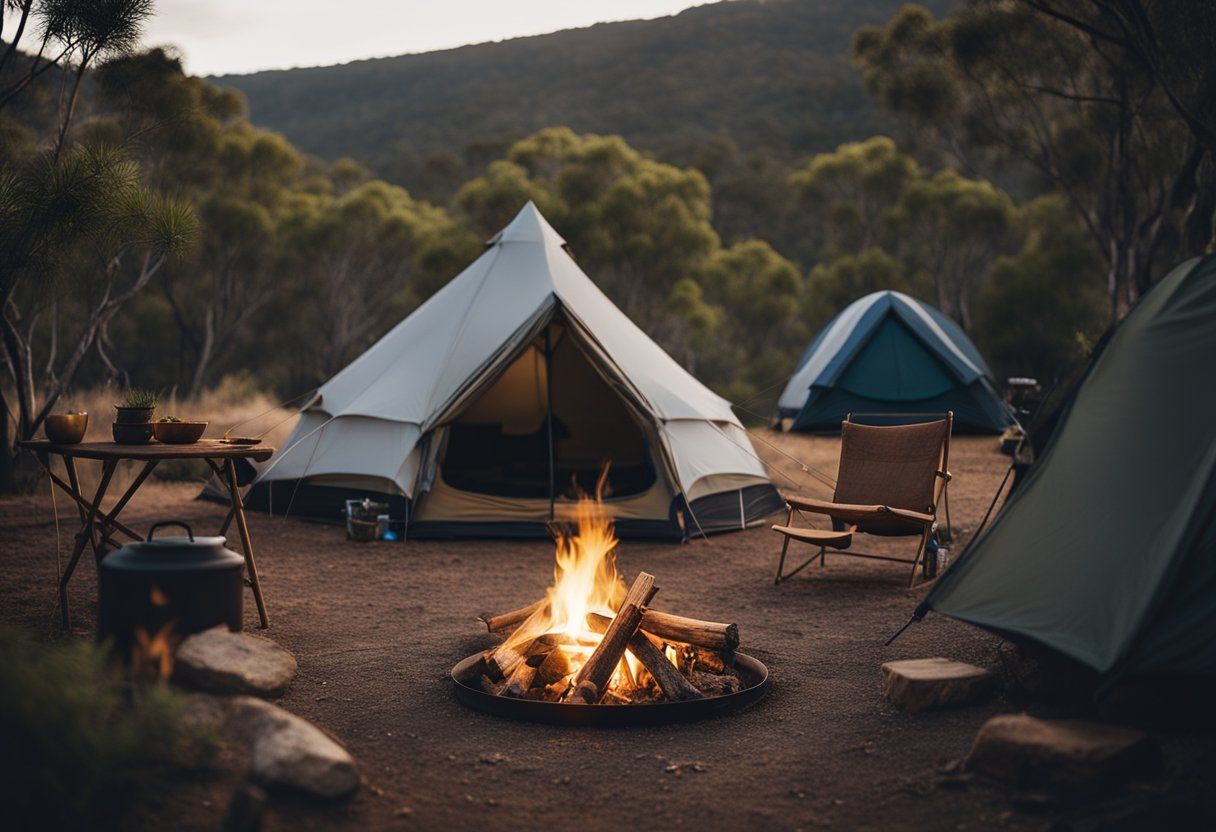
Australia offers a wealth of backcountry camping opportunities across its diverse landscapes. From expansive national parks to scenic coastal regions and the rugged outback, campers have a variety of environments to explore. Each area provides unique adventures, whether it's hiking through lush forests or experiencing the solitude of vast desert expanses.
National Parks and Reserves
Australia's national parks and reserves are prime spots for backcountry camping. Kosciuszko National Park in New South Wales features the high peaks of the Snowy Mountains, offering challenging hikes and sweeping views. Daintree Rainforest in Queensland serves as an intriguing camping location with its rich biodiversity. Cradle Mountain–Lake St Clair National Park in Tasmania presents spectacular landscapes and rugged trails for adventurers seeking a more secluded experience. Each park requires campers to adhere to guidelines focused on preserving natural habitats, ensuring minimal impact on these treasured environments.
Coastal Regions
Australia's coastline is vast and varied, providing countless coastal camping spots. Great Ocean Road in Victoria is known for its dramatic seascapes and offers several camping areas close to the beach. The Eyre Peninsula in South Australia boasts beautiful coastal parks like Coffin Bay, where campers can enjoy pristine beaches and stunning sunsets. Bay of Fires in Tasmania is famous for its white sandy beaches and clear blue waters. Coastal campers should prepare for changing weather conditions and practice safety, especially in remote areas.
Outback and Wilderness Areas
The Australian outback and wilderness areas offer a true escape and provide solitude amidst dramatic landscapes. In Karijini National Park in Western Australia, campers find incredible gorges and waterfalls, perfect for adventurous travellers. Flinders Ranges in South Australia brings camping under ancient mountain ranges with rich cultural heritage sites. In the Northern Territory, Kakadu National Park offers a mix of wetlands, Aboriginal rock art, and diverse wildlife. Campers in these regions must be well-prepared with supplies and aware of safety precautions due to the remote and rugged nature of the terrain.
Planning Your Trip
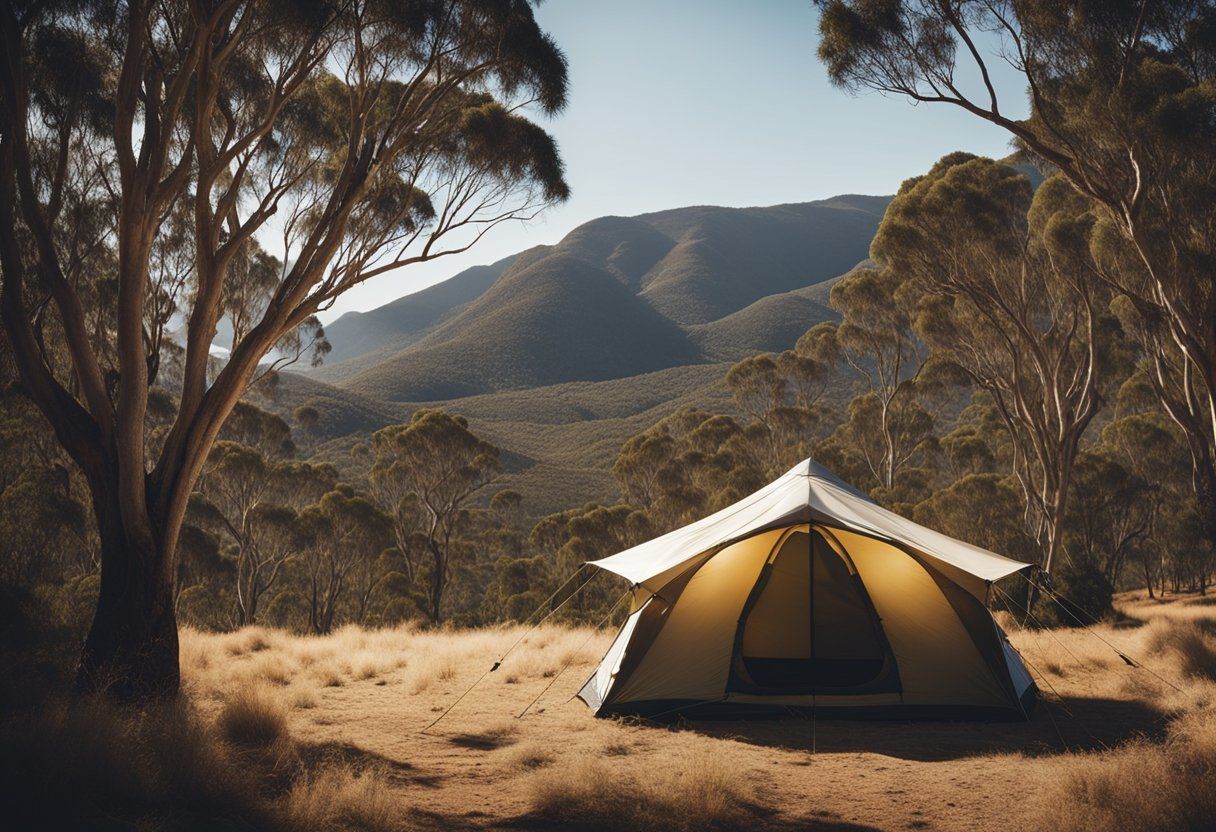
Backcountry camping in Australia requires careful planning. Key considerations include the right gear and supplies, ensuring safety and having the proper navigation tools, and understanding permits and regulations to follow.
Essential Gear and Supplies
When venturing into Australia's backcountry, having the right gear is vital. A sturdy tent that withstands varied weather is a must. Other essentials include a sleeping bag suited to the climate and a compact cooking stove for meal preparation. Carrying a first aid kit is critical for any emergencies.
Provisioning enough food and water is crucial. Dehydrated meals are lightweight and efficient. A water filtration system or purification tablets help ensure safe drinking water. Portable solar chargers are handy to keep devices powered in remote areas.
Navigation and Safety Equipment
Navigation tools are essential for staying on track. A reliable map and compass provide non-digital navigation options. Investing in a GPS device can also be helpful for more precise location tracking. A SPOT or EPIRB device is advisable for communicating in case of emergencies.
Safety gear enhances trip security. A torch or headlamp with extra batteries helps in low-light conditions. Weather-appropriate clothing layered for changing temperatures is important. Pay attention to insect repellent and sunscreen to protect against bites and sun exposure.
Permits and Regulations
Before heading out, it's vital to check for any necessary permits. Many of Australia's national parks and protected areas require a camping permit. It's important to research regulations for each destination, as they can vary widely.
Respecting the environment by following the Leave No Trace principles is crucial. Ensure you know any fire restrictions and adhere to them strictly. Always stay on designated paths and campsites to minimise environmental impact and preserve natural habitats.
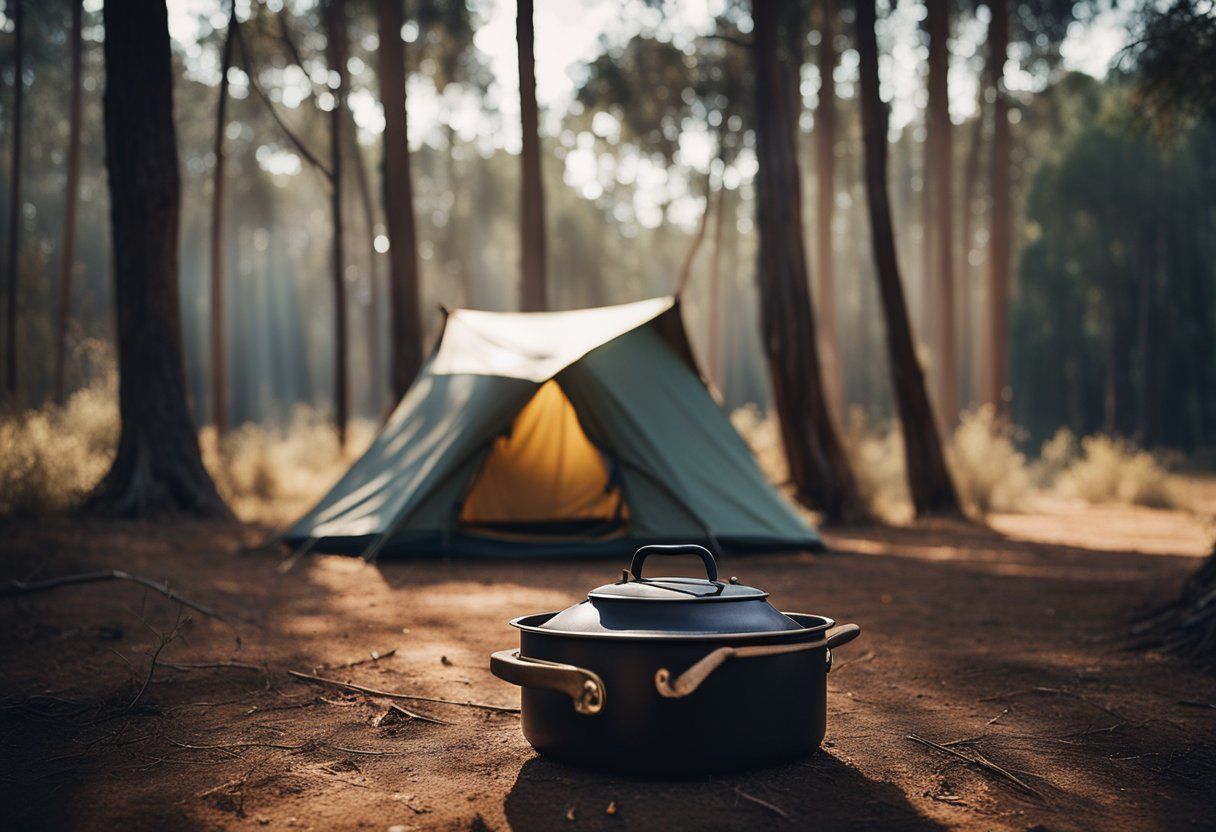
Backcountry camping in Australia requires preparation for wildlife encounters, changes in weather, and knowing emergency procedures. By being well-informed in these areas, campers can ensure both safety and enjoyment during their outdoor adventure.
Wildlife Encounters
Australia's diverse wildlife can be both fascinating and dangerous. Campers should be aware of common animals like snakes, spiders, and large marsupials. Carrying a first-aid kit with bandages and antivenom is essential for handling unexpected encounters with snakes and spiders.
Avoiding wildlife begins with securing food. Store all food in sealed containers and hang them if possible. Respecting animals’ space is key; never approach or try to feed wild animals. Following these precautions can prevent most negative interactions with wildlife.
Weather Awareness and Preparedness
The weather in Australia can be unpredictable. Planning for changes in weather conditions is crucial. Campers should check forecasts before their trip and bring appropriate clothing, such as waterproof jackets for sudden rain showers and hats for sunny days.
Always set up camp away from flood-prone areas to avoid flash floods. It's important to have a reliable weather app or radio for updates. Recognising signs of extreme weather, like approaching storms, means taking shelter early and ensuring all equipment is secure.
Emergency Procedures
Knowing what to do in an emergency can be life-saving. Always inform someone about your travel itinerary and expected return time. Carry a basic first-aid kit and learn how to perform CPR and treat injuries.
Having a map and compass, along with knowing how to use them, is crucial. Campers should also carry a portable GPS device for location tracking. In case of an emergency, understanding how to signal for help using a mirror or fire could attract rescuers.
Environmental Considerations
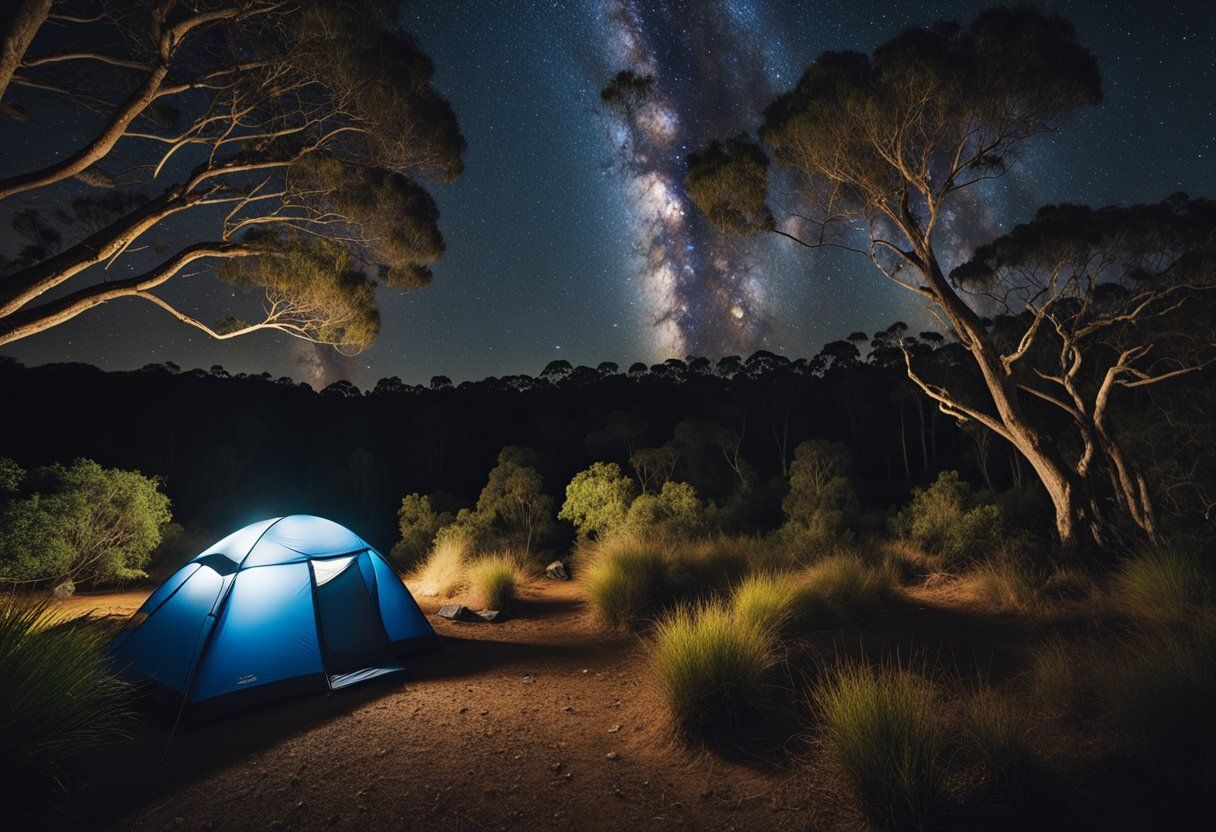
Backcountry camping in Australia requires campers to respect and preserve the natural environment. This involves adhering to Leave No Trace principles, ensuring responsible fire safety and management, and practising proper waste disposal.
Leave No Trace Principles
Adhering to Leave No Trace principles is essential in preserving Australia’s diverse natural landscapes. Campers should minimise their impact by sticking to established trails. Avoid trampling vegetation or disturbing wildlife. It's important to pack out all rubbish and leave what you find. Avoid picking plants or removing natural features. Take care to keep noise levels low to avoid disturbing local fauna, maintaining the tranquillity of the surroundings.
Using biodegradable soap and washing at least 60 metres away from water sources helps prevent contamination. This practice protects fragile ecosystems from damage. Following these principles ensures that the pristine environment remains unspoiled for future visitors.
Fire Safety and Management
Fire safety is crucial, especially in areas prone to bushfires. Campers should check for any fire bans or restrictions before heading out. In designated areas where fires are permitted, use established fire rings or fireplaces. If these are not available, consider using portable stoves instead of open fires. Clear the area around the fire pit of flammable materials and never leave a fire unattended.
Ensure fires are completely extinguished before leaving the site or sleeping. Use water to douse embers, stir the ashes, and douse again to ensure safety. Maintaining a cautious approach prevents accidental wildfires, safeguarding both campers and local ecosystems.
Waste Disposal
Proper waste disposal is key to maintaining the cleanliness and health of camping areas. Campers must carry out all rubbish, including food scraps, to avoid attracting wildlife and disrupting natural behaviours. Use a trowel to dig a small hole for human waste, at least 15-20 centimetres deep and 60 metres away from any water sources. Cover the hole completely after use.
For hygiene products like toilet paper and sanitary items, pack them out in a sealed bag to prevent littering. If there are designated waste facilities nearby, always use them. Responsible waste disposal helps protect the environment and ensures future campers can enjoy the same natural beauty.
Camping Etiquette and Community
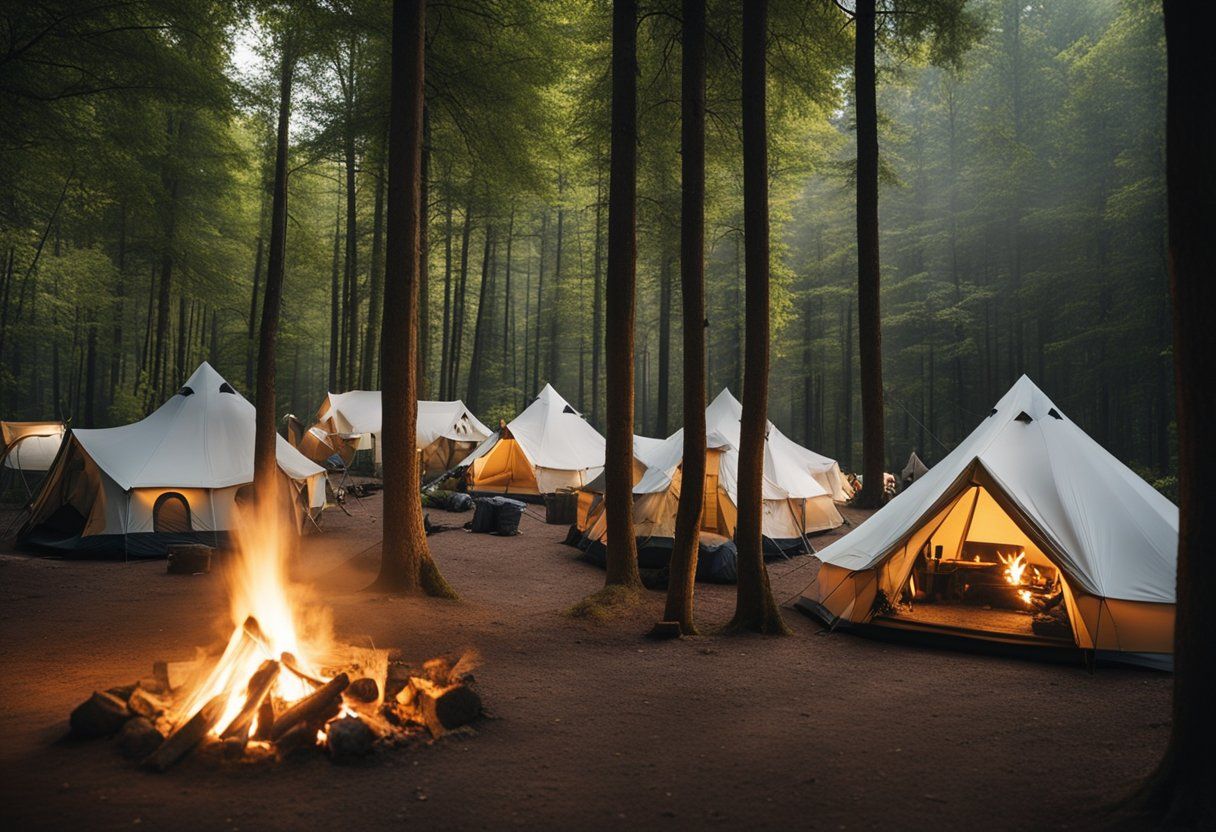
When backcountry camping in Australia, it is important to respect local customs, share spaces respectfully, and engage with the community by supporting conservation efforts. These principles ensure a harmonious and enjoyable experience for everyone.
Respecting Local Cultures and Heritage
In Australia, many camping areas are located on land that holds cultural significance to Indigenous communities. Campers should strive to appreciate and uphold these traditions. They should adhere to guidelines that protect sacred sites and follow posted signs regarding restricted areas.
Engaging with the local culture can enrich the camping experience. Learning about the customs and historical sites nearby can provide campers with a deeper connection to the land. Visitors are encouraged to attend cultural tours or talks to gain authentic insights and perspectives. This awareness helps preserve the richness of Australia's heritage.
Sharing Trails and Campsites
Cooperation and consideration are key when sharing trails and campsites. Maintaining distance from other groups helps create a peaceful environment. It is considerate to avoid setting up camp near others unless necessary. This allows everyone to enjoy the solitude that backcountry camping offers.
Keeping noise to a minimum respects the natural setting and other campers. At night, using headlamps instead of bright lights and keeping voices low can make a big difference. Ensuring that belongings are not spread across shared areas like trails or pathways is another way to show respect for fellow adventurers.
Advocacy and Volunteering
Getting involved in advocacy and volunteering initiatives supports the conservation of these beautiful spaces. Various organisations offer opportunities to repair trails, plant native flora, and remove waste. These activities help maintain the natural balance of camping areas, ensuring they can be enjoyed by future generations.
Participating in clean-up events or contributing to local conservation projects creates stronger ties to the community. Joining groups dedicated to protecting wildlife and habitats can also be a fulfilling way to make a positive impact. Such efforts not only benefit the environment but also foster a sense of belonging and stewardship among camping enthusiasts.
Navigation and Route Planning
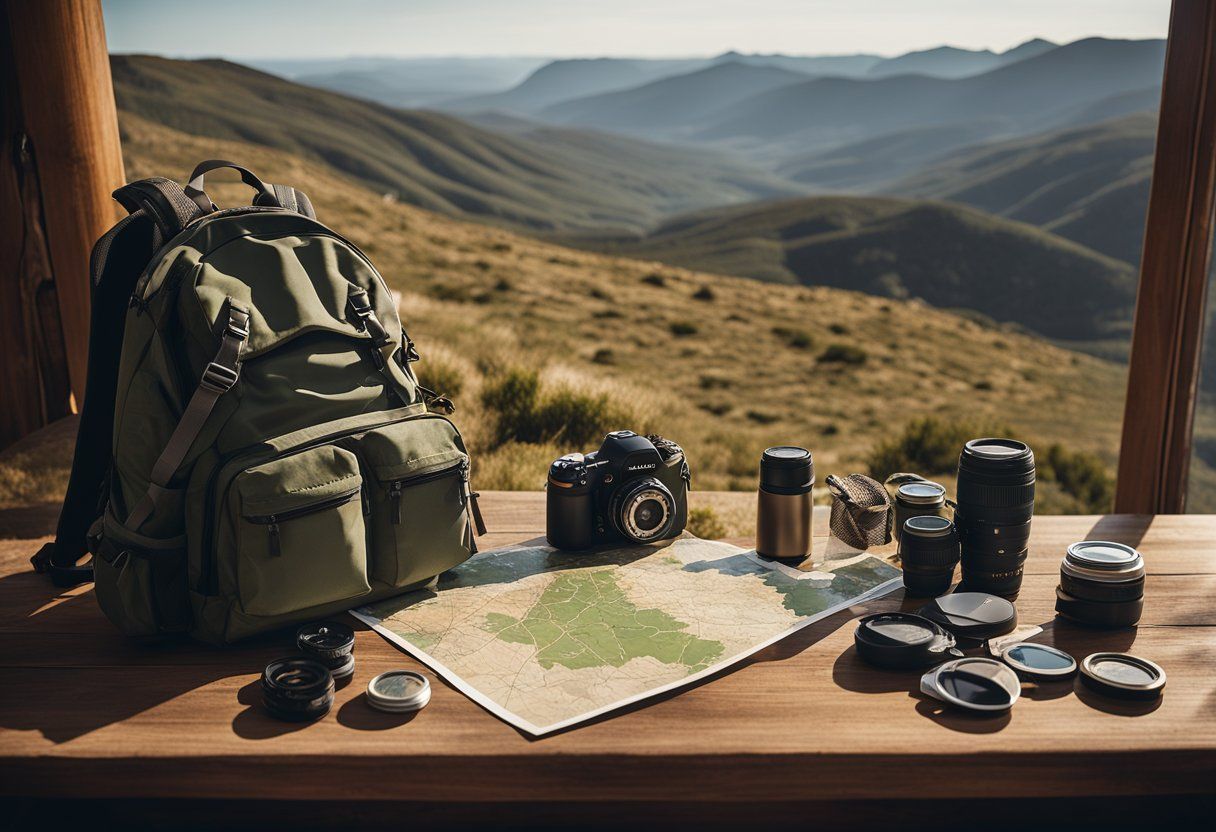
Understanding how to navigate and plan routes for backcountry camping in Australia is essential. This involves using topographical maps and GPS technology, effectively planning routes, and considering the timing and seasons for a safer journey.
Topographical Maps and GPS Technology
Topographical maps are crucial tools, providing detailed information about the landscape, such as elevation changes and terrain types. Campers should learn how to interpret these maps to identify key features like ridges, valleys, and water sources.
GPS technology enhances navigation by offering real-time location tracking. Devices like handheld GPS units and smartphone apps are popular choices. These tools provide extra confidence, although they should complement, not replace, map-reading skills. Reliable apps, such as GaiaGPS, offer offline capabilities and detailed overlays, which are valuable in areas with no mobile reception.
Planning Your Route
Planning a route involves more than just selecting a destination. It requires assessing trail difficulty and estimating travel time based on terrain and personal fitness levels. Beginners might choose well-marked paths with moderate difficulty, while experienced hikers might seek remote trails that offer solitude.
It’s important to pack essentials like water, food, and navigation aids. Identifying potential hazards, such as river crossings or steep climbs, should be part of this process. Leaving a trip itinerary with someone reliable is wise, detailing planned routes and expected return times. This step ensures help can be dispatched if something goes wrong.
Timing and Seasonal Considerations
Timing and season can significantly affect camping conditions in the Australian backcountry. Different regions experience varied climates, impacting trail conditions and accessibility. For instance, summer months may bring extreme heat in the outback, making water availability and sun protection critical concerns.
During the wet season in northern Australia, roads and trails may become impassable due to flooding. Conversely, the cooler months offer more manageable temperatures, but they can also bring unexpected rains, especially in mountainous regions. It’s essential to check weather forecasts and plan trips during favourable conditions to maximise safety and enjoyment.
Gear and Equipment Insights
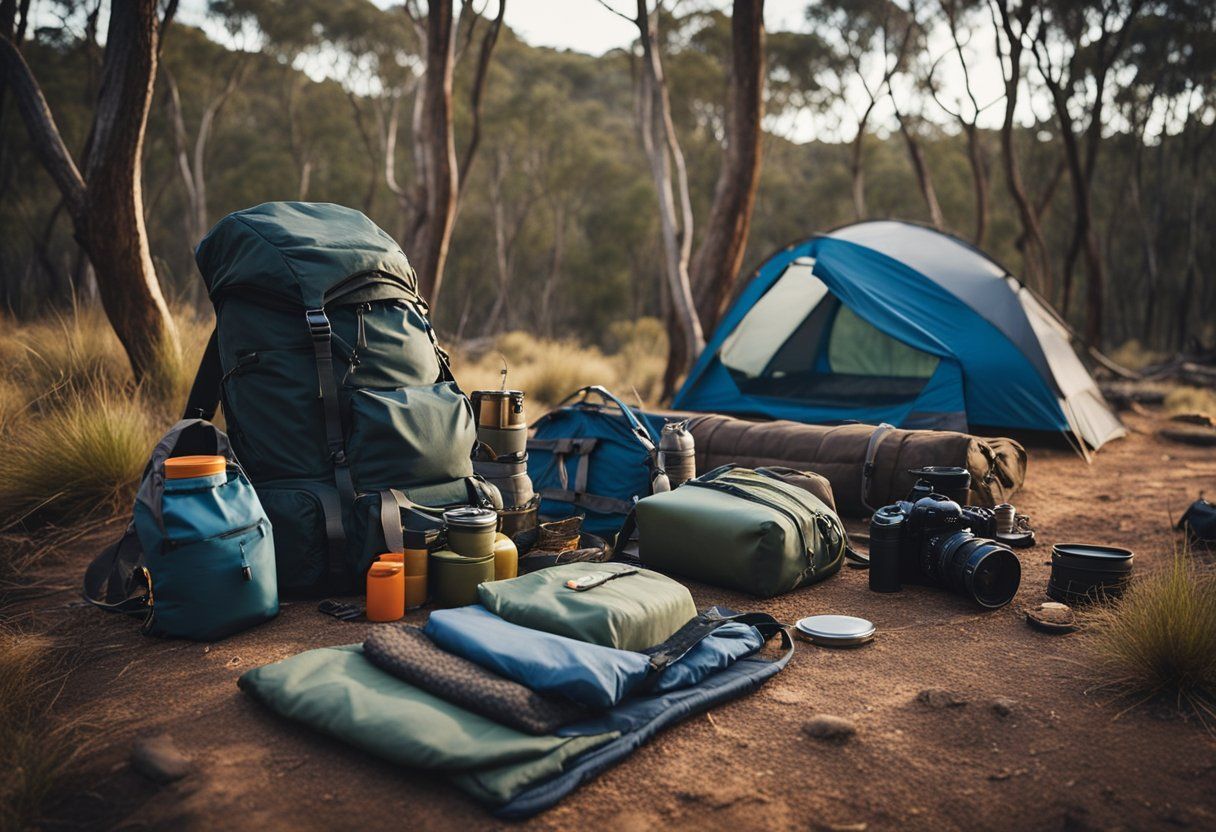
Choosing the right gear and equipment is crucial for a successful backcountry camping trip in Australia. Prioritising items that are lightweight yet durable, investing in reliable shelter systems, and selecting appropriate cooking gear can greatly enhance the overall experience.
Lightweight and Multi-Functional Gear
When venturing into the Australian backcountry, reducing pack weight is essential. Opt for equipment that serves multiple purposes. For instance, a quality hiking backpack with several compartments can organise gear efficiently and offer comfort.
Items like multi-tools with functions such as a knife, pliers, and a can opener integrate multiple tools into one. Clothes made from materials like merino wool are ideal, as they offer warmth, breathability, and odour resistance. Lightweight sleeping bags and mats, designed with compactness and thermal efficiency in mind, are also worth considering.
Tents and Shelter Systems
Effective shelter is crucial for weather protection. Consider tents like the Nemo Dagger OSMO 2P, known for its light weight and ample interior space. A tent that pitches inner-first is useful in warm climates, allowing you to sleep under the stars if desired.
For added versatility, look for tents with detachable rainfly components. This flexibility helps adapt to changing weather conditions. When choosing a tent, ensure it is suited to handle the diverse Australian environments like rainforests and deserts.
Cooking and Food Storage
Cooking in the backcountry requires compact and efficient systems. A lightweight camping stove is a must, with options for fuel sources such as gas or liquid. Consider stoves that are easy to assemble and clean. Paired with portable cookware, they simplify meal preparation.
Food storage also demands careful thought. Use bear-proof containers or bags to protect food from wildlife. Keep perishables cool using small insulated bags or by utilising natural cool spots in the environment. Prioritise high-energy, non-perishable foods like nuts and dried fruits to sustain energy throughout the trip.
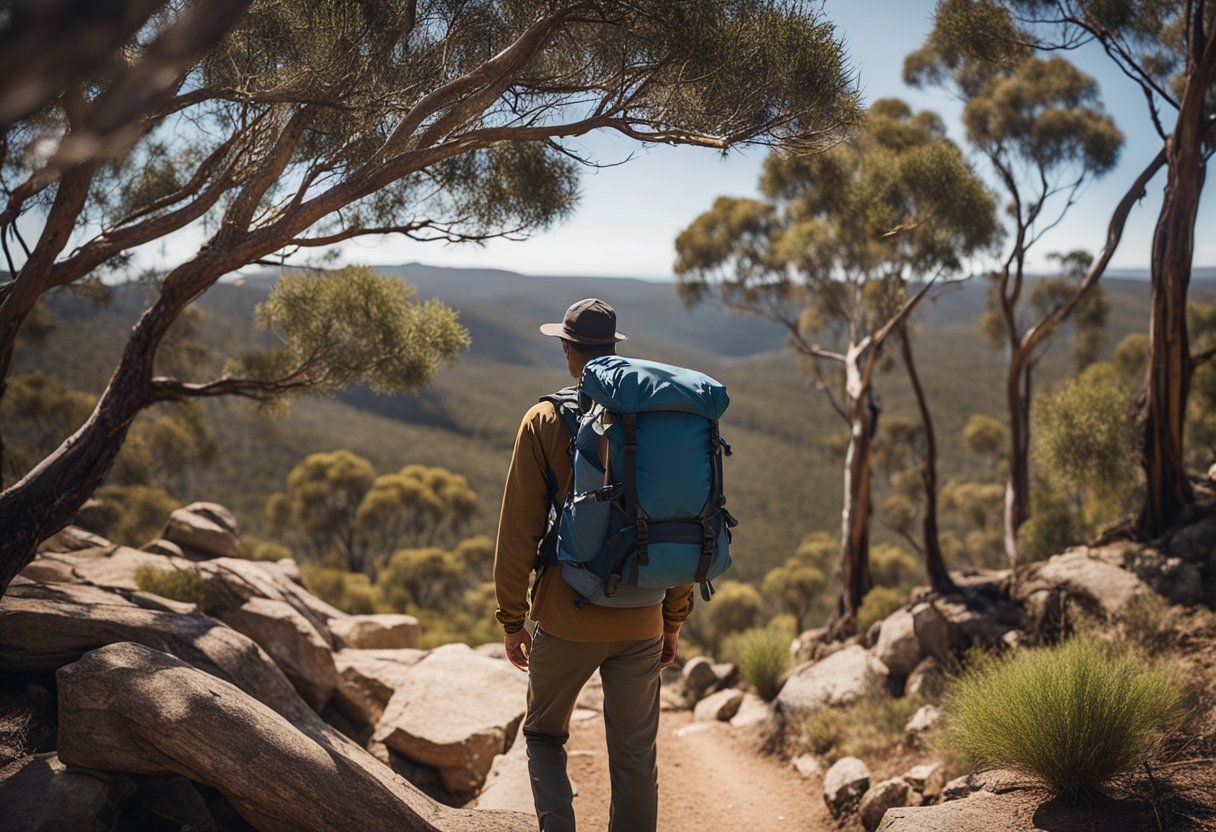
Backcountry camping in Australia requires both physical preparation and a strong fitness level. Training, conditioning, and proper nutrition will help ensure a safe and enjoyable experience. Staying fit and nourished will make long hikes and camping more manageable and fun.
Training and Conditioning
It's essential to build endurance and strength before heading into the backcountry. Gradually increasing hiking distances is a practical approach. Begin with shorter hikes and steadily increase both the distance and the difficulty. This method helps in adjusting to carrying a packed backpack over varied terrains.
Incorporating strength exercises, such as squats and lunges, can improve muscle endurance. A strong core is critical for balance and stability on uneven ground. Regular cardiovascular workouts, like cycling or swimming, enhance stamina and lung capacity. Remember to include rest days in the training regimen to allow for muscle recovery and prevent injuries.
Nutrition and Hydration
Proper nutrition fuels the body for demanding activities in the wild. A balanced diet rich in carbohydrates, proteins, and healthy fats will provide the necessary energy. Carbohydrates supply quick energy, while proteins aid in muscle repair. Healthy fats offer long-lasting energy for extended hiking sessions.
Hydration is critical, especially in Australia's warm climate. Drinking water even before feeling thirsty can prevent dehydration. Carrying spare water is wise, but using a nearby natural water source can help conserve supplies. Always ensure water is purified before consumption. Electrolyte supplements can be beneficial to replace lost minerals during intense physical activities.
Responsible Interaction with Wildlife
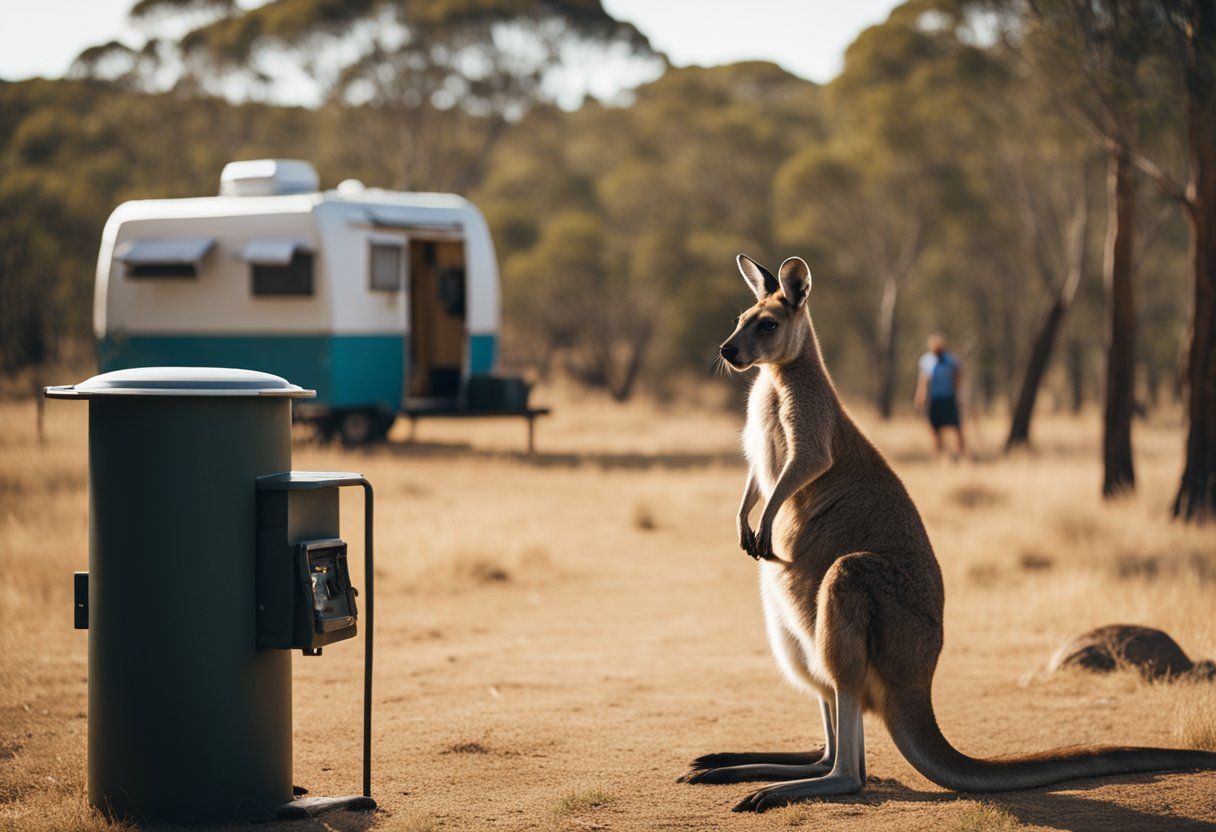
Wildlife interaction during backcountry camping in Australia should always focus on respect and minimal disturbance. Observers can enjoy wildlife through careful observation and photography, while also ensuring their presence doesn’t disrupt the natural behaviours of animals.
Observation and Photography
When observing wildlife, maintaining a safe distance is crucial. This ensures that animals remain undisturbed and continue with their natural activities. Using tools like binoculars or spotting scopes can enhance the experience without getting too close. Binoculars and scopes, as highlighted in Responsible Wildlife Encounters, allow for detailed observation from a distance.
Photography should be done quietly and without flash, which can startle or distress animals. Capturing images without intruding on animals’ space helps protect their natural behaviour and habitats. Campers should prioritise ethical practices by respecting barriers and signs that indicate restricted areas for wildlife safety.
Minimising Impact and Disturbance
Campers should adopt Leave No Trace principles to minimise impact. Activities should be conducted in a way that leaves natural environments unaltered and thriving. As suggested by The Art of Leave No Trace Camping, using existing trails and campsites helps protect sensitive areas from damage.
Keeping noise levels low is essential for both campers and wildlife. Loud disturbances can stress animals and disrupt their routines. Furthermore, never feed wildlife. Feeding animals can lead to dependency, affecting their health and altering ecosystem dynamics. By following these guidelines, campers ensure that their presence remains as unobtrusive as possible.
Solo Versus Group Camping
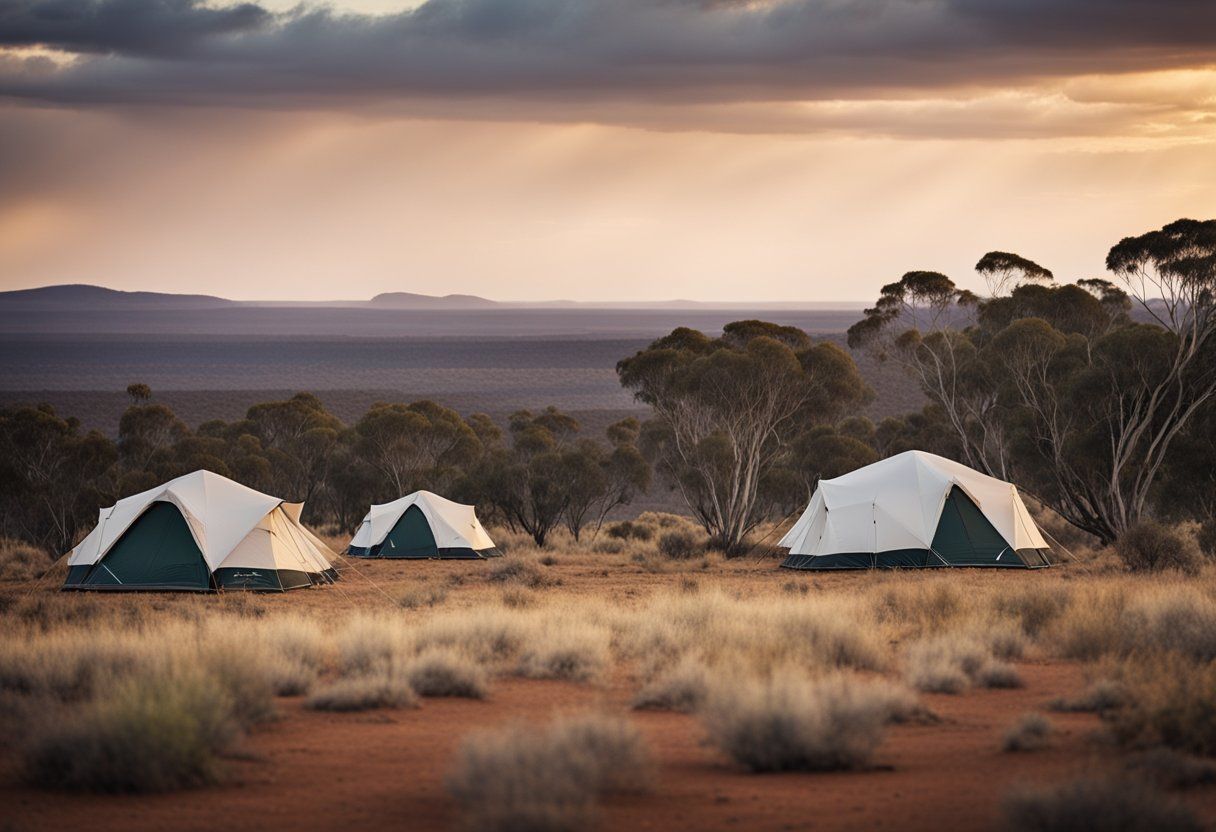
Backcountry camping in Australia presents unique experiences whether embarking on a solo journey or camping with a group. Each approach has its own set of benefits and challenges, which can shape the adventure in distinct ways.
Pros and Cons of Solo Trips
Solo camping provides a rare chance for self-reflection and personal growth. It allows campers to fully disconnect from social pressures and focus on their own pace and preferences. This can lead to a stronger sense of self-reliance and confidence. However, solo campers must be extra vigilant about safety, as there is no one to assist in emergencies.
While solitude can be peaceful, it can also lead to loneliness or boredom without proper preparation. The experience demands considerable resilience and mental fortitude. Those who thrive on being alone may find this rewarding, but it is crucial to weigh the potential risks and plan accordingly for a successful solo adventure.
Group Dynamics and Leadership
Camping in a group introduces social elements that can enhance the experience through shared responsibilities and companionship. Group members can support each other, making challenges like setting up camp and navigating trails more manageable. Effective teamwork can lead to a more enjoyable and efficient trip.
Nevertheless, group camping requires clear communication and leadership to manage differing opinions and preferences. Conflicts can arise if roles and tasks are not well-defined. Leadership within the group is essential to ensure everyone is on the same page and to maintain harmony. Understanding the dynamics of the group beforehand can help in planning a smooth and enjoyable camping experience for everyone involved.
Frequently Asked Questions
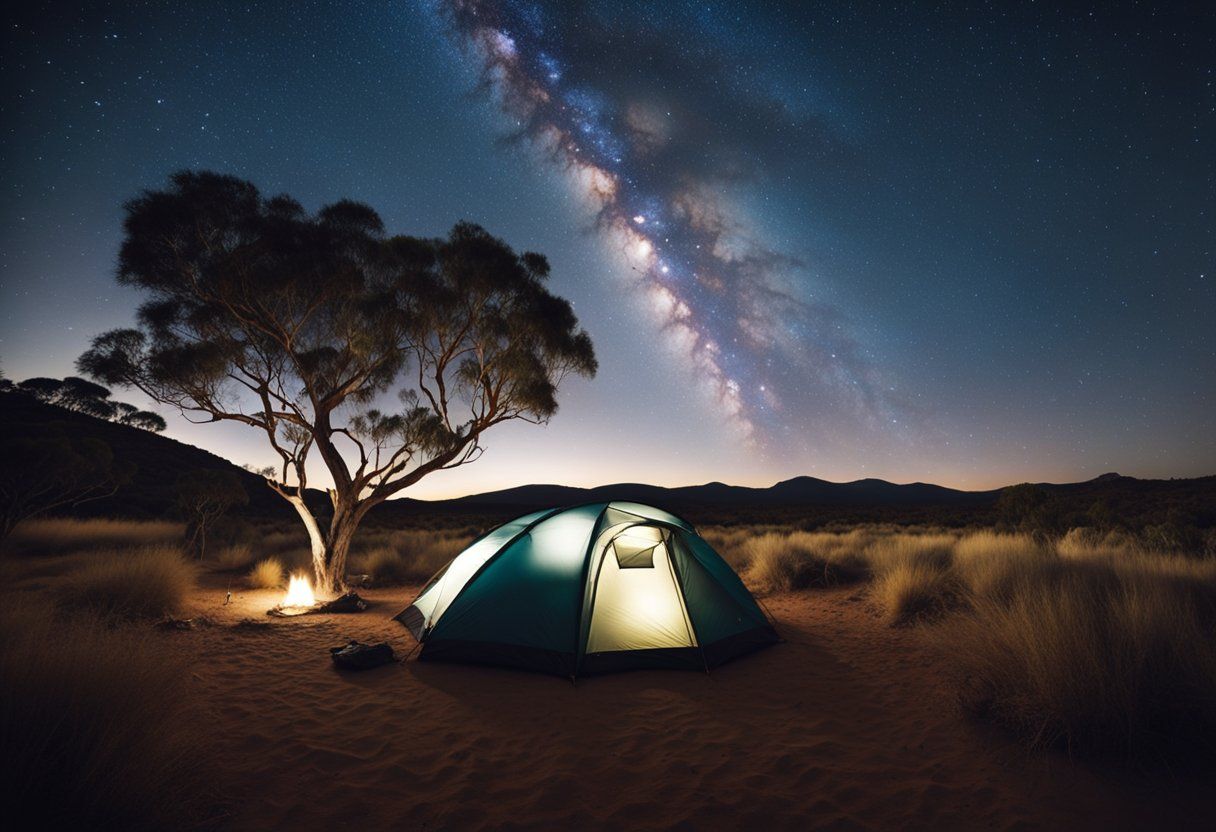
Backcountry camping in Australia offers incredible experiences in nature's wildest areas. It can involve navigating national parks, understanding legal guidelines, and preparing for unique challenges.
What are the best national parks for backcountry camping in Australia?
Australia is home to several national parks ideal for backcountry camping. Parks such as Kakadu, Blue Mountains, and Grampians offer diverse landscapes and wildlife. Kosciuszko National Park is popular for its alpine scenery and hiking trails, making it a favourite among campers.
How can I locate free backcountry camping spots in Australia?
Locating free backcountry camping spots can usually be done through local visitor centres, online forums, and dedicated camping websites. Researching areas like state forests or less popular national parks often reveals hidden spots that are less crowded.
What should beginners know before going backcountry camping in Australia?
Beginners should be well-prepared with the right gear and knowledge of the environment. It's important to understand navigation skills and pack essentials like water purification tools and sturdy footwear. Taking a guided tour might be beneficial for those new to camping.
Are there any legal implications for wild camping in New South Wales?
Wild camping in New South Wales often requires permission or a permit, especially in national parks and reserves. It's essential to check with local authorities for regulations and restrictions to ensure compliance with the area's rules.
What regulations must be followed when bush camping in Victoria?
In Victoria, camping regulations can vary by location. Campers often need to adhere to specific fire safety rules, especially during dry seasons. It is crucial to camp in designated areas and follow guidelines provided by Parks Victoria to ensure minimal environmental impact.
What are the essentials for preparing for backcountry camping in Kosciuszko National Park?
When camping in Kosciuszko National Park, essentials include a robust tent, warm clothing, and reliable navigation tools. The area experiences rapid weather changes, so campers should be ready for sudden temperature drops. A way to purify water and enough food supplies are also necessary for remote camping.

